Sidi Brahim, or the instructive story of the colonial war
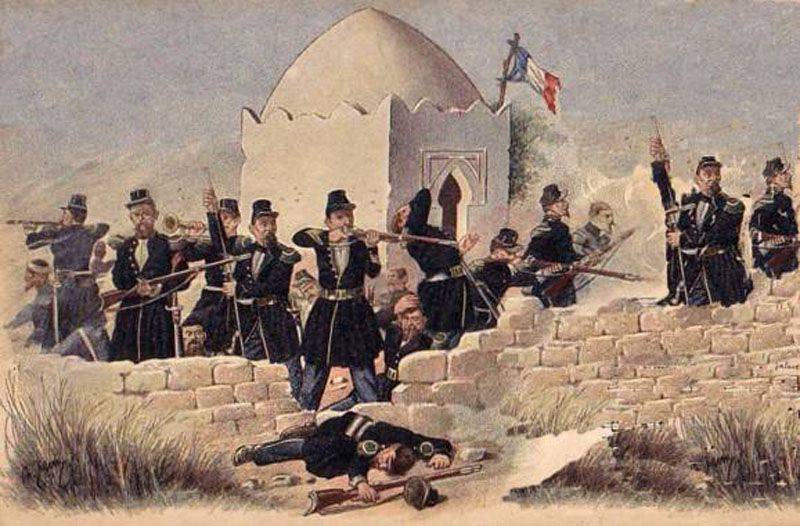
How often would frowning philosophers and thinkers utter immutable truths about the danger of following the path of blood and iron, grateful readers, closing weighty folios, again take up weapon.
Wars have been big and local, bloody and “strange”, but sooner or later they fall into one general category - the forgotten. They are consigning themselves to oblivion, they erase from memory not only because it is scary. Often it is simply convenient, beneficial - both politically and economically. Not only war is a continuation of politics by other means. The post-war world is also a continuation of the war — simply in a different setting and other methods. It is beneficial to forget something - to remind about something on occasion.
The Algerian campaign of the French army 1830 – 1847 is not customary to discuss with enthusiasm. Even without enthusiasm, they remember little of him. Its outcome was the accession of land, which became a bleeding wound for France. The conquest of this vast territory, as well as its loss, was accompanied by long, bloody and uncompromising wars, accompanied by punitive raids and brutal massacres.
By the second half of 1845, the once disobedient Algeria was increasingly leaning under the war machine of France. Having concentrated almost 100 of a thousand-strong army and very skillfully using swarms and disagreements among the tribal nobility, the French systematically subjugated the country to themselves. The leader of the rebels - the tireless and charismatic Abd al-Qadir - was forced to completely move to guerrilla actions, attacks on individual posts, garrisons and communications. All this was very similar to the Spanish guerilla and the Russian partisan war, except that al-Qadir did not have a regular army behind him: neither Wellington nor Kutuzov. He could only rely on his own strength.
Entice!
21 September 1845, commander of the small garrison of Gemma, located in the province of Oran (northwestern Algeria), lieutenant colonel (lieutenant colonel) Lucien de Montagnac was told that he wanted to be seen by an envoy of the Souchalia, a loyal Frenchman. When the local appeared before the clear eyes of the lieutenant colonel, he excitedly announced that Abd al-Qadir himself was about to invade the tribal lands from the side of Morocco, and asked “French friends” for help.
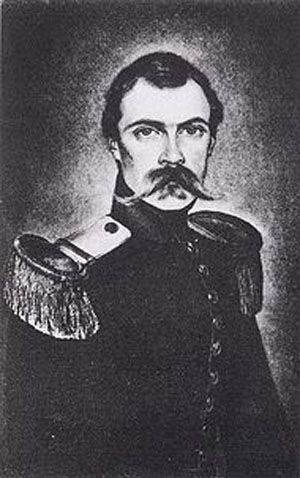
Montagnac, according to contemporaries, was a good soldier. By the period described, he had extensive combat experience: he participated in the Spanish expedition 1823 of the year and suppressed the June uprising in Paris in 1832, and in the latter case refused to award the Order of the Legion of Honor, citing the fact that he would wait for a more suitable and worthy occasion. In Algeria, Montagnac showed himself, on the one hand, a desperately brave and skillful commander, on the other, his methods of influencing the local population caused some frustration even among French officers. His call to Paris to give explanations was not ruled out, but not because of some particular sentimentality of the French military command — there was simply such a serious factor as “public opinion”.
One way or another, Montagnac speaks at 10 on the evening of September 22 from Gemma - he heads the convoy, consisting of the 8 th battalion of foot hunters of the Duke of Orleans regiment and the 2 of the hussars. The total number of forces that left the garrison was approximately 2 people. The mules' convoy included provisions, water, and ammunition for a period of ten days. The French had no artillery.
In the evening of September 22, they camped on the riverbank about 15 kilometers from the base. At night, Montagnac receives information from local "well-wishers" that Abd al-Qadir, with a small detachment, is located nearby. At the beginning of the third hour of the night, leaving Lieutenant Kostya with part of the people to guard the camp and the wagon train, Montagnac, who considered the capture of the Algerian leader a matter of honor, made a night march in the direction of the town of Sidi Brahim. Moving a couple of kilometers away from the camp, the hussars who were on patrol spotted large clouds of dust that were rapidly approaching. Arab riders suddenly appeared from the folds of the terrain. What happened often in the guerrilla war, the French got into a skillfully prepared ambush. "Several satellites" were actually detachment numbering from 5 to 6 thousand people. The hussars, who tried to counterattack and allow the infantry to move from the marching position to the combat position, were quickly cut down. Hackers still managed to form a square. Lieutenant Koste, hurrying along with the company of the rangers to help his surrounded comrades, was intercepted by the Arabs and died with most of his people.
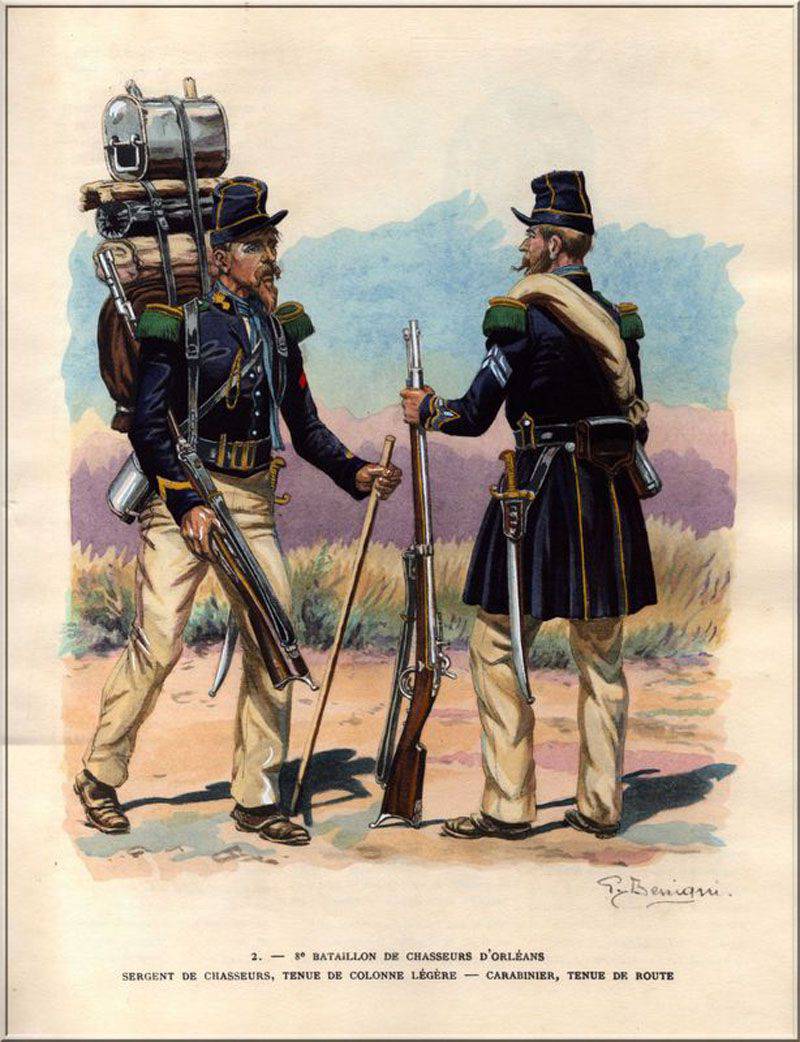
The position of the French was more than serious - the Arab cavalry attacked them from all sides. Montagnac himself falls, hit by a bullet in the stomach. He, despite being seriously wounded, inspires his people to fight to the last and gives the order to try to break through to the tomb of the marabout at Sidi Brahim, where they could find at least some kind of shelter. Marabouts called in North Africa saints who made the pilgrimage to Mecca. After death, their bodies were placed in small tombs surrounded by a stone fence.
The grave became a bastion
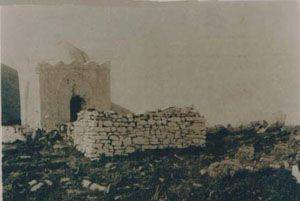
By the evening, after numerous attacks by the Arabs, no more than a hundred of the nearly 400 French will survive. In the end, Captain Gera, along with the 80 rangers - the remnants of various companies - managed to reach the tomb and gain a foothold there. There also managed to hold several cargo mules with stocks, which allowed to continue the defense. The tomb of Sidi Brahim was a small structure surrounded by a low stone wall about 1,5 meters in height. Its area was estimated by the surviving French in 20 on 20 meters, which made it possible to create dense defensive orders. The low gates were barricaded immediately. At the top of the tomb, it was decided to hoist the flag, which, along with the inspiring factor, also performed a practical function - cavalry patrols from Gemma, whose presence the besieged hoped for, could notice it from afar. There was no suitable banner, and the flag was made from a piece of Corporal Lavasiere's uniform, a handkerchief and a red officer's belt. Algerians surround the tomb of Sidi Brahim from all sides and attack. They try to get closer and throw stones at the French. If Abd al-Qadir had at least one field gun, it would have ended very quickly. But there was no gun. The besieged ones are well-aimed fire from behind a stone wall, while trying to get over the obstacle, they use bayonets.
To the French are three parliamentarians with a letter from Abd al-Qadir with a proposal to surrender. Not only did he manage to trap and actually defeat a large detachment of the enemy, capitulation of his remnants would further raise political prestige. Many tribes, tired of war, hesitated in supporting the emir at the new round of confrontation with the French, especially as the latter became more and more. Having read the emir's letter to his subordinates (there was a translator in the detachment), Captain Hera asked them if they agreed to captivity? “No!” The huntsmen answered in unison. The attacks resumed and followed one by one until the evening of 23 September. On the morning of 24, the French were again offered to surrender, which was followed by the quite expected refusal. Fighting resumed. The situation of the besieged became more and more difficult - the stocks of food and drinking water quickly declined.
Abd al-Qadir decided to present a weighty argument. By this time, the Algerians in their hands were several dozen prisoners from the defeated Montagnac detachment, most of them were injured. From among the captives, Captain Dutert was chosen, who was offered to approach the besieged and convince them to lay down their arms. They explained to the captain without sentiment that if he could not convince his fellow soldiers to capitulate, they would simply cut off his head. Accompanied by two warriors with bare sabers, Dutert was led to the wall. But instead of the words “vain bloodshed, useless resistance” and other similar rhetoric expected from him and other similar rhetoric, Dutert called upon the rangers to fight to the end and not lose courage. The brave captain was escorted back to the positions of the Arabs, allowed to smoke a cigarette and was beheaded.
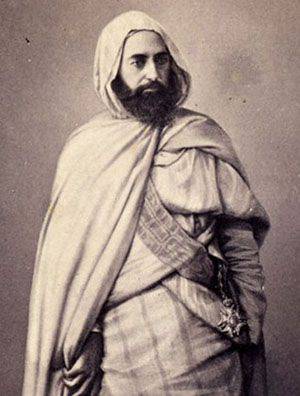
A stray bullet wounded the Emir in his ear - the only time in his life. He prays for a long time in solitude. Obviously, after this the Algerian leader decided to try psychological methods again, Abd al-Qadir ordered the captive Gorny Rolland, who had retained his pipe, to play a retreat, but Rolland, instead of a signal to retreat, sounded the attack. The bold miner, unlike Captain Dutert, was left alive.
The stubborn resistance of the French causes the respect of the enemy - in the evening of September 24, the emir sends a new letter with an offer to surrender, promising to save lives. To which I received the same written response with only one word. The very same word that General Cambron screamed in the bloody fields of Waterloo in response to the British’s proposal to lay down their arms. In response to the new insolence, the Arabs again attack a handful of rangers. Particularly fierce was the attack undertaken on 10 in the evening of September 24. He was recaptured with great losses. The night brought the desired rest to the besieged rangers. Having set up a dense chain of pickets, the Algerians camped nearby. When the fervor of the battle came down, fatigue, hunger and, most importantly, thirst returned. All the scarce reserves that were besieged began to come to an end: too much was thrown during a quick march to the tomb of Sidi Brahim. All day September 25 continued harassing attacks with already lower efficiency - the Emir was aware of the plight of the French, and he himself suffered heavy losses. By evening, it became finally clear that outside help should not be expected. Ammunition came to an end. The situation with water was desperate, it was completely over by that time, and people began to drink a terrible mixture of absinthe, which was in some supply of the doctor of the detachment, and of their own urine.
Breakthrough
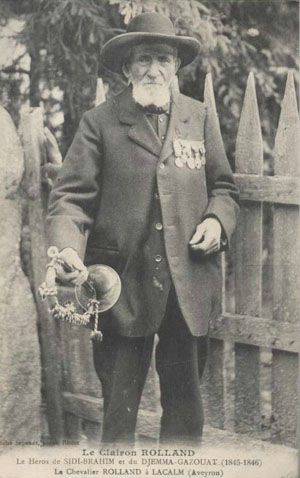
The improvised military council made the only correct decision in the current situation - to go for a breakthrough. Early in the morning of September 26 around 7 in the morning, the surviving 80 (in other 77 sources) rangers climbed over the wall and rushed for a breakthrough. At first everything went smoothly - the Arabs ’advanced picket was shot with bayonets. Such an action was so unexpected for the already tired of the siege and fighting of the Algerians, that the rangers of the rangers even managed to get quite far in the direction of the post of Gemma. From the French did not expect such audacity and believed that their death was inevitable. Exhausted by a three-day siege, people quickly exhausted themselves. At about eight in the morning a halt was made in a small ravine. Here they were surrounded by hostile-minded residents of nearby villages, who, having learned that they were “beaten by kafir” nearby, armed themselves with what they could and took a lively part in the pursuit. A desperate hand-to-hand fight began, which the emir's warriors soon joined. The survivors of the huntsman lined up in the shape of a square and prepared to sell their lives at a higher price. Luckily surrounded by the pursuers there were few firearms, and they acted unorganized. Arab sabers and French bayonets joined in a deadly battle. Using the folds of the terrain, the huntsmen stubbornly made their way towards Gemme. In the garrison were aware of the death of the detachment of Montagnac - one of the hussars managed to reach him and report what had happened. The rangers were all considered dead, but when the shots were heard in Gemme, it was decided to send an enhanced infantry squad to reconnoitre. While the training camp was going on, only 16 people hovering around the gates of the fort were all that was left of the convoy that came out on the evening of September 22 from Gemma. The five survivors soon died from wounds. More than seventy people, mostly injured, were captured by the people of Abd al-Qadir and captured another 23 number. Most of them did not survive this captivity.
Public response
History The fight in Sidi Brahim caused a great resonance. Abd al-Qadir used his success to the maximum. French prisoners were shown to representatives of different tribes as proof of victory. In addition, many trophies - rifles, parts of ammunition, personal belongings taken under Sidi Brahim - were distributed to the right people in the form of souvenirs and visual propaganda material. Tribes in remote areas were quite sure that at least the army corps was defeated. The victory of Abd al-Qadir stirred up the Algerians, showing that the enemy can and must be beaten.
In France, society was, on the one hand, admired by the courage of the soldiers, who were practically in a hopeless situation. On the other hand, Montagnac was outraged by the frankly adventurism of Montagnac, who was jealous of al-Qadir’s fame and wanted to catch him by all means, because of which the lieutenant colonel fell into a trap and became the culprit in the death of his subordinates. There were many questions to the representatives of the French military command - for three days the huntsman fought surrounded at a relatively short distance from his garrison, and they were not helped. The French public, who, thanks to the newspapers, was convinced that Algeria belonged to France, and that all the rebels were pacified, and the rebel emir himself was sitting in Morocco and composing philosophical treatises while eating babies, was shocked by the death of almost 400 soldiers. After the first details of the battle of Sidi Brahim, censorship restrictions were imposed on a number of newspapers. The main culprit ultimately exposed Montagnac with his irrepressible adventurism, which added excessive cruelty. Like the heroes of Conan Doyle, Dr. Watson and Henry Baskerville, who rushed headlong to the swamps to catch the convict Seldon, Montagnac acted thoughtlessly and without proper preparation. By the way, in this war, as in the war for the independence of Algeria, both sides did not particularly stand on ceremony in the means and methods. With the only difference that the Algerians did not invite the French to visit them.
History of the monument
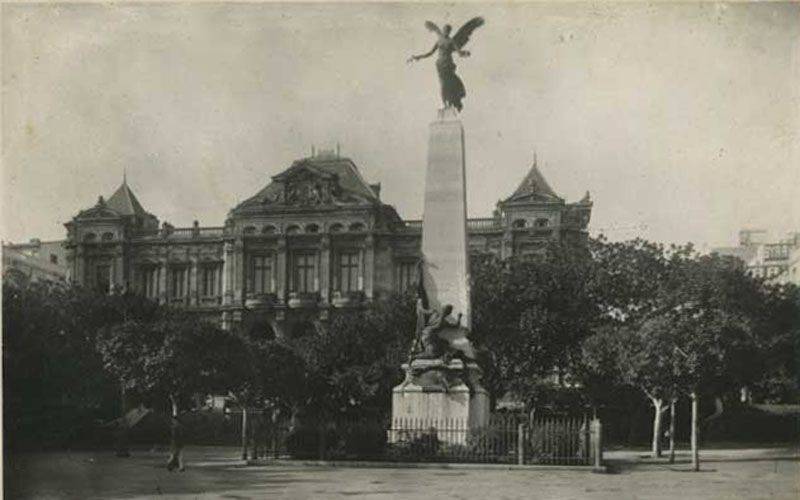
The battle of Sidi Brahim became a widely known example of courage and dedication in the French army. He was remembered, and in the end the idea arose to erect a monument in honor of the rangers of the 8 battalion in the provincial capital of Oran. It was not without some difficulties. In 1893, it was announced the creation of a monument in honor of those who fell at Sidi Brahim. Public subscription began, the famous sculptor Aime-Jules Dalou was chosen. The owner of the marble quarries Emil Delmont agreed to put the marble at cost. But here Baron Montagnac, the nephew of Lieutenant Colonel Montagnac, intervened and demanded that the monument be erected only in memory of his uncle. It was too much - the nephew threatened litigation and in general made a lot of noise. In the midst of scandal, the baron died, and the hype subsided. But here Dahl already wanted to expand the scope of his remuneration. After receiving 5 thousand francs and not yet starting work, he demanded the same amount. The committee for the creation of the monument pointedly pointed out to the maitre that with all due respect to his talent, the allegorical depiction of figures of France and Glory should not require excessive inspiration and genius. Dalu slowed down and set to work. In August 1898, the monument was solemnly erected in Oran.
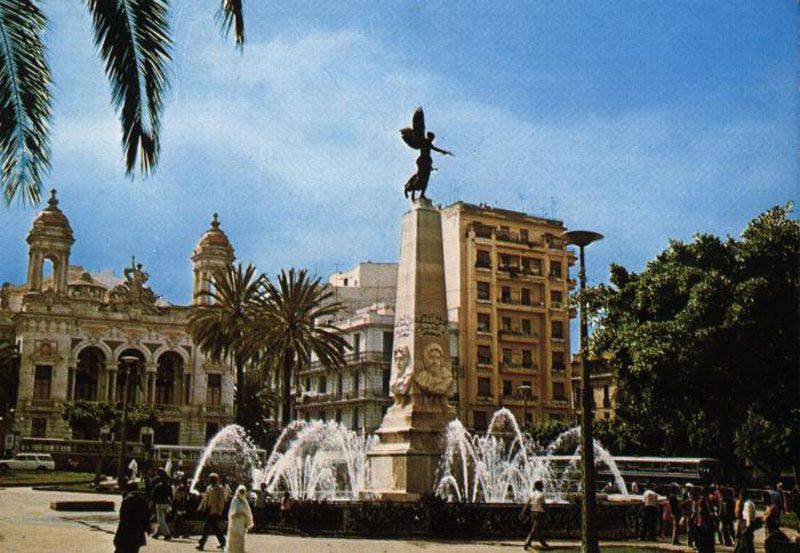
The monument existed until 1965, until it was remade by the new Algerian authorities, with the dismantling of all remnants of colonialism - the statue of the girl personifying France was replaced by the bust of Abd al-Qadir. A new monument with a statue transported from Oran was erected in the city of Perissac, Gironde department. The remains of the soldiers who died at Sidi Brahim were reburied in 1965 in the old fort of Vincennes in Paris, where the museum of the French rangers is located.
Battalion way
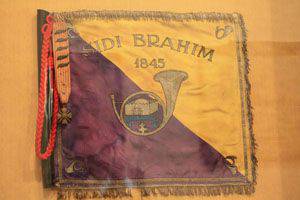
The 8 th rangers battalion, shortly after the battle of Sidi Brahim, was again restored and took an active part in the final phase of the conquest of Algeria. In 1859, at the Battle of Magenta, during the Italian campaign. During the Franco-Prussian War of 1870 – 1871, the huntsmen fought at Metz and Sedan, where most of the units were captured after the surrender of Napoleon III. The 8 Battalion was again recreated from volunteers and recruits as part of the creation of a new army of Leon Gambetta and sent to the Foron, where he showed himself from the best side. During World War I, huntsmen distinguished themselves at Verdun, in 1916, seizing a German fortified point and holding it for several days. At the final stage, the French had to use stones to repel attacks. In these battles, the 8 Battalion lost 70% personnel. The unit took an active part in the battles during the spring-summer campaign 1940 unlucky for the French. After the signing of the truce, the Sidi Brahim battalion was disbanded under the terms of the truce.
When 25 August 1944, the capital of France was liberated, it was decided to re-form the rangers battalion, which was given the name "Sidi Brahim". In September, 1944, the unit was brought to the regular structure - 800 people who received the appropriate weapons. In November - sent to the front, where he distinguished himself in battles for the city of Metz. Interestingly, the American General Patton was elected an honorary sergeant of the battalion.
In 1968, the word “mechanized” appeared in the unit name - the huntsmen stopped being a purely infantry unit. In the 90-ies as part of the 1-th armored division is part of the Eurocorps. 7 May 1999 in the city of Wittlich The 8 th mechanized jaeger battalion was officially disbanded. At the farewell ceremony with the banner was attended by many veterans. In the eyes of many were tears. So in the framework of the "reform" France lost its famous division.
Afterword
The tragedy of Sidi Brahim has become the story of both nations. For one, this is an example of the highest military valor and fortitude, for the other - a symbol of the struggle for the right to live their own lives. Public opinion of the XIX century was not very worried that this battle was only a stage of the colonial war, conquering. The promotion of a white person, a European to different parts of the world, even then, decades before Kipling's “Burden,” was considered a good and progressive affair. And the light of culture and civilization, so stubbornly and persistently overtaking the inhabitants of the “wild corners” of deserts and the jungle, glowed with the flame of sighting volleys and the conflagrations of burnt cities and villages. France grieved about four hundred soldiers killed in the far edge of a colonial campaign. But did anyone remember the tens of thousands of Arabs exterminated before and after that by the French? Algerians were not at all white and fluffy - they were harsh people, not prone to excessive sentimentality. But they were on their land. Did they want to join European values with the help of bayonets? France paid dearly for their mistakes in colonial policy. The consequences of them are still felt. The huntsmen of the 8 Battalion were simply fulfilling their soldier’s duty. How would any real warriors and soldiers of their own country do it?
Who knows, in the light of the latest events, will we see soon a remake of the battle at Sidi Brahim, only in its mirror image. In which the descendants of the warriors Abd al-Qadir, having occupied the defense of the chapel in Alluville-Belfoss, will repel the attacks of the newly created 8 th battalion of French rangers ...
Information